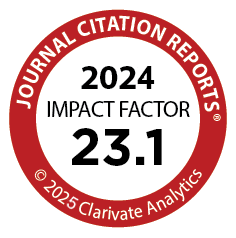Skip Nav Destination
Issue Highlights
- CD371/SAVVY/IL-18 CAR T cells for refractory AML
- Spotlight: anti-PD1 toxicities in cHL first-line therapy
- Acalabrutinib in older and frail patients with CLL
- Gene therapy with AAV-FVIII–mimetic antibody for hemophilia A
- Runx2 is a key regulator of HSC activity
- Germ line variation influences MPN phenotype
- How autoantibodies bind β2GPI in APS
Latest in Blood
Travis J. Fleming; Mateusz Antoszewski; Sander Lambo; Michael C. Gundry; Riccardo Piussi; Lara Wahlster; Sanjana Shah; Fiona E. Reed; Kevin D. Dong; Joao A. Paulo; Steven P. Gygi; Claudia Mimoso; Seth R. Goldman; Karen Adelman; Jennifer A. Perry; Yana Pikman; Kimberly Stegmaier; Maria N. Barrachina; Kellie R. Machlus; Volker Hovestadt; Andrea Arruda; Mark D. Minden; Richard A. Voit; Vijay G. Sankaran
Clonal Hematopoiesis and Lymphoma-Associated Mutations in Hematopoietic Progenitors in B-Cell Non-Hodgkin Lymphoma
Available to Purchase
Laura Wiegand; Patricia Silva; Daniel Noerenberg; Friederike Christen; Klara Kopp; Benjamin Nick Locher; Pelle Löwe; Marlon Tilgner; Robert Altwasser; Vanessa Storzer; Catarina M Stein; Franziska Briest; Christopher Maximilian Arends; Mareike Frick; Jana Ihlow; Anna Dolnik; Naveed Ishaque; Ulrich Keller; Il-Kang Na; Livius Penter; Lars Bullinger; Raphael Hablesreiter; Frederik Damm
Treatment-related Outcomes and Patterns of Relapse in Secondary CNS Involvement by Large B-cell Lymphoma
Available to Purchase
Juan Pablo Alderuccio; Diva Baggio; Sunwoo Han; Paola Ghione; Imran A Nizamuddin; Jahanzaib Khwaja; Aditi Saha; Ning Dong; Yucai Wang; Hua-Jay J. Cherng; Seda S. Tolu; Nina D. Wagner-Johnston; Thomas A. Ollila; Natalie S. Grover; Jean L Koff; Amrita Desai; Praveen Ramakrishnan Geethakumari; Tamara K Moyo; Jose Sandoval-Sus; Narendranath Epperla; Danielle S. Wallace; Manali Kamdar; Rita Tavarozzi; Alexey V Danilov; Han W. Tun; Javier Munoz; Mayur S. Narkhede; Joanna M Rhodes; Anca Prica; Andrea Kuhnl; Adrian Matthew Maraj; Jessica Okosun; Jeffery Smith; Wendy Osborne; Victoria Calvert; Dima El-Sharkawi; Ammar Hilali; Graham P. Collins; Kim Linton; Nagah Elmusharaf; Anna Santarsieri; Farheen Karim; Firas Baidoun Firas; Sarah Monick; Iris Margalit Trutzer; Jones Can; Amy A Ayers; Jacopo Calabrese De Feo; John Sharp; Nilanjan Ghosh; Rachel Treitman; Avyakta Kallam; Izel Okcu; Chathuri Abeyakoon; William Hann; Aisling Barrett; Vismay Deshani; Brad S Kahl; Julio C. Chavez; Adam J. Olszewski; Kate Cwynarski
Advertisement intended for health care professionals







